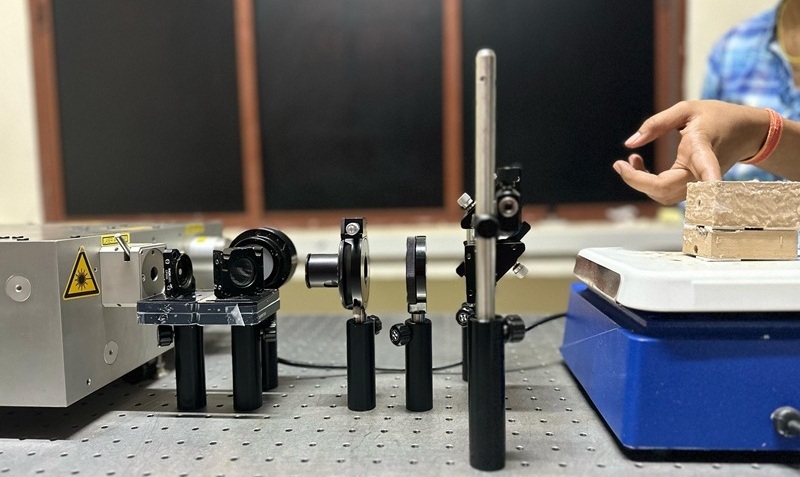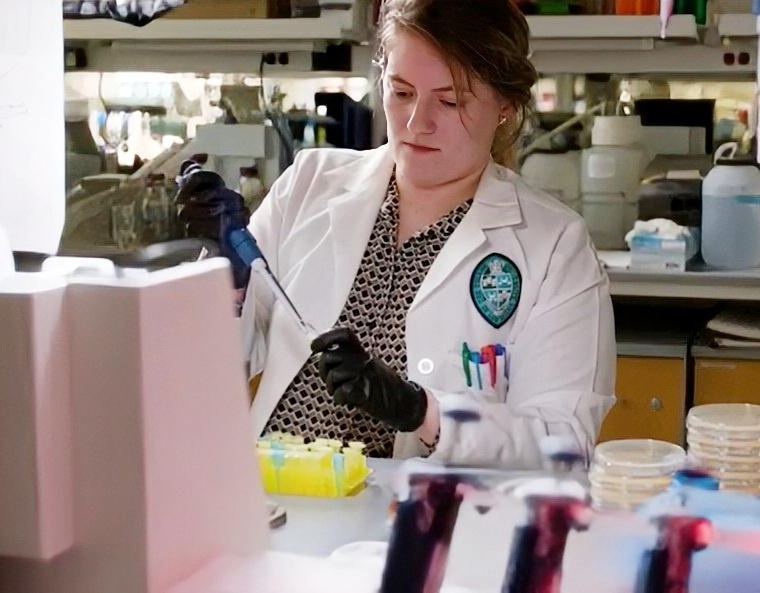Scientific Session Explores Role of Technology in New Era of Specimen Transport
|
By LabMedica International staff writers Posted on 27 Jul 2023 |

Regardless of a lab's scale or complexity, patient samples require transportation prior to testing. From moving specimens across a room to shipping them globally, all labs inevitably encounter challenges at some point. The AACC 2023 session titled "Advances in Courier, Drone, and Automated Laboratory Transport" empowered attendees with the understanding of how issues and inefficiencies in sample transport could impact test results. Moreover, the session also threw light on how emerging technologies can be harnessed to streamline testing and maintain specimen quality.
Session moderator Joe Wiencek, Ph.D. from the Vanderbilt University School of Medicine (Nashville, TN, USA) argued that despite the critical role of patient specimens in testing, the sector hasn't paid adequate attention to specimen transport conditions. At his institution, Wiencek has employed innovative devices to record conditions during specimen transport, such as temperature, humidity, and G-forces. He expressed considerable concern over the practice at external collection sites of storing samples in outdoor lockboxes while waiting for courier pick-up, particularly given the intense heat in his region. However, in the absence of benchmarks and standards for specimen transport, it's challenging for laboratories to take proactive steps. Wiencek shared plans for new Clinical and Laboratory Standards Institute (CLSI, Berwyn, PA, USA) documents that address specimen preanalytics, particularly PRE-06 Evaluation of External Transport Systems, which he is co-authoring. The attendees left the session equipped with a set of tools to overcome their sample transport hurdles.
Timothy Amukele, MD, from ICON Clinical Research (Farmingdale, MD, USA) expanded the discussion about external sample transport by introducing the concept of medical drone transport. While medical drones might seem like a concept straight out of a science fiction novel for some, they are very much a reality in certain parts of the world. Dr. Amukele highlighted how African governments are leading the charge in harnessing these technologies effectively. He cited the example of Rwanda, where drones are used to deliver life-saving blood products to remote hospitals, along with similar implementations in other countries. Dr. Amukele believes that these success stories are noteworthy and succeeded in convincing the attendees of the viability of medical drones in specimen transportation.
However, the application of drone transportation isn't limited to isolated regions. There's considerable interest in deploying this technology in densely populated urban areas as well. Dr. Amukele shared his personal experience of spearheading a medical drone research team in the United States, shedding light on the steps required to establish a medical drone transport network. He stressed that medical drones have already shown their worth in real-world applications and expressed his wish to see their usage further expand within laboratory practice.
Jonathan Genzen, MD, Ph.D., from ARUP Laboratories (Salt Lake City, UT, USA) shifted the focus of the discussion to sample transportation and automation within healthcare facilities and laboratories. His objective at his institution is to automate routine, non-value-adding steps in the testing process, thereby allowing professionals to concentrate on complex tasks that demand human expertise. Genzen recounted his experiences in integrating automated intelligent vehicles for sample transportation. These non-track-based mobile robots are suitable for specimen distribution and are equipped with sensors to navigate their surroundings, avoiding collisions with objects and individuals. He also discussed lessons in automation derived from the COVID-19 pandemic. Attendees gained insights into how they can modernize their specimen transport procedures. Genzen emphasized that labs can implement simple, easy improvements to reap substantial benefits from minimal investments.
Related Links:
Vanderbilt University
ICON Clinical Research
ARUP Laboratories
CLSI
Latest AACC 2023 News
- First-of-Its-Kind Single-Cell Clinical Microbiology Platform Wins 2023 Disruptive Technology Award
- Ground-Breaking Phage-Based Diagnostic Kit for Laboratory Tuberculosis Testing Presented at AACC 2023
- Laboratory Experts Show How They Are Leading the Way on Global Trends
- Unique Competition Focuses on Using Data Science to Forecast Preanalytical Errors
- Best Approach to Infectious Disease Serology Testing for Laboratorians and Clinicians Discussed at AACC 2023
- Breaking Research Throws Light on COVID, Flu, and RSV Co-Infections
- New Research Shows Self-Collected Tests Perform Similarly to Provider-Collected Tests for Detecting STIs
- AI Predicts Multiple Sclerosis Risk, Flags Potentially Contaminated Lab Results
- Prevencio Presents AI-Driven Platform for Medical Diagnostic Test Development
- Scientific Session Explores Future Role of AI and ML in Clinical Laboratory
- SARSTEDT Demonstrates Pre-Analytic Innovations for Improving Specimen Quality, Reducing TAT and Automating Labs
- World's First Large Sample Volume, Open-Assay, Super-fast, Ultra-Sensitive, and Sample-To-Answer PCR Instrument
- Vital Biosciences Unveils Revolutionary POC Lab Testing Platform
- World's Smallest POC Device for Complete Blood Count in 30 Minutes Unveiled
- General Biologicals Unveils CTC Cancer Detection Products and Automated Molecular System
- Fapon Showcases Innovative Diagnostic and Biopharma Solutions
Channels
Clinical Chemistry
view channel
Carbon Nanotubes Help Build Highly Accurate Sensors for Continuous Health Monitoring
Current sensors can measure various health indicators, such as blood glucose levels, in the body. However, there is a need to develop more accurate and sensitive sensor materials that can detect lower... Read more
Paper-Based Device Boosts HIV Test Accuracy from Dried Blood Samples
In regions where access to clinics for routine blood tests presents financial and logistical obstacles, HIV patients are increasingly able to collect and send a drop of blood using paper-based devices... Read moreMolecular Diagnostics
view channel
Rapid Diagnostic Test to Halt Mother-To-Child Hepatitis B Transmission
Hepatitis B, an inflammation of the liver caused by the hepatitis B virus (HBV), is the second-leading infectious cause of death globally, following tuberculosis. This viral infection can result in serious... Read more
Simple Urine Test Could Help Patients Avoid Invasive Scans for Kidney Cancer
Clear cell renal cell carcinoma (ccRCC) is the most prevalent type of kidney cancer, making up approximately 90% of cases. Each year, around 400,000 individuals are diagnosed with ccRCC globally.... Read moreHematology
view channel
New Scoring System Predicts Risk of Developing Cancer from Common Blood Disorder
Clonal cytopenia of undetermined significance (CCUS) is a blood disorder commonly found in older adults, characterized by mutations in blood cells and a low blood count, but without any obvious cause or... Read more
Non-Invasive Prenatal Test for Fetal RhD Status Demonstrates 100% Accuracy
In the United States, approximately 15% of pregnant individuals are RhD-negative. However, in about 40% of these cases, the fetus is also RhD-negative, making the administration of RhoGAM unnecessary.... Read moreImmunology
view channel
Post-Treatment Blood Test Could Inform Future Cancer Therapy Decisions
In the ongoing advancement of personalized medicine, a new study has provided evidence supporting the use of a tool that detects cancer-derived molecules in the blood of lung cancer patients years after... Read more
Cerebrospinal Fluid Test Predicts Dangerous Side Effect of Cancer Treatment
In recent years, cancer immunotherapy has emerged as a promising approach where the patient's immune system is harnessed to fight cancer. One form of immunotherapy, called CAR-T-cell therapy, involves... Read more
New Test Measures Preterm Infant Immunity Using Only Two Drops of Blood
Preterm infants are particularly vulnerable due to their organs still undergoing development, which can lead to difficulties in breathing, eating, and regulating body temperature. This is especially true... Read more
Simple Blood Test Could Help Choose Better Treatments for Patients with Recurrent Endometrial Cancer
Endometrial cancer, which develops in the lining of the uterus, is the most prevalent gynecologic cancer in the United States, affecting over 66,000 women annually. Projections indicate that in 2025, around... Read moreMicrobiology
view channel
Innovative ID/AST System to Help Diagnose Infectious Diseases and Combat AMR
Each year, 11 million people across the world die of sepsis out of which 1.3 million deaths are due to antibiotic-resistant bacteria. The burden of antimicrobial resistance (AMR) continues to weigh heavily,... Read more
Gastrointestinal Panel Delivers Rapid Detection of Five Common Bacterial Pathogens for Outpatient Use
Acute infectious gastroenteritis results in approximately 179 million cases each year in the United States, leading to a significant number of outpatient visits and hospitalizations. To address this, a... Read morePathology
view channel
Powerful AI Tool Diagnoses Coeliac Disease from Biopsy Images with Over 97% Accuracy
Coeliac disease is an autoimmune disorder triggered by the consumption of gluten, causing symptoms such as stomach cramps, diarrhea, skin rashes, weight loss, fatigue, and anemia. Due to the wide variation... Read more
Pre-Analytical Conditions Influence Cell-Free MicroRNA Stability in Blood Plasma Samples
Scientists worldwide are working to enhance the quality of diagnostics and prognosis for various diseases, including cancer, by analyzing different body fluids such as blood, urine, and saliva.... Read more
3D Cell Culture System Could Revolutionize Cancer Diagnostics
New drugs and diagnostic methods should ideally be both safe and quickly accessible, but the preclinical testing phase often hinders rapid progress due to the high level of resources it requires.... Read more
Painless Technique Measures Glucose Concentrations in Solution and Tissue Via Sound Waves
Blood glucose levels are traditionally measured using invasive methods that require pricking the skin with small needles. However, for individuals with diabetes, frequent testing throughout the day becomes... Read moreTechnology
view channel
Novel Sensor Technology to Enable Early Diagnoses of Metabolic and Cardiovascular Disorders
Metabolites are critical compounds that fuel life's essential functions, playing a key role in producing energy, regulating cellular activities, and maintaining the balance of bodily systems.... Read more
3D Printing Breakthrough Enables Large Scale Development of Tiny Microfluidic Devices
Microfluidic devices are diagnostic systems capable of analyzing small volumes of materials with precision and speed. These devices are used in a variety of applications, including cancer cell analysis,... Read moreIndustry
view channel
Philips and Ibex Expand Partnership to Enhance AI-Enabled Pathology Workflows
Royal Philips (Amsterdam, The Netherlands) has expanded its partnership with Ibex Medical Analytics (Tel Aviv, Israel) and released the new Philips IntelliSite Pathology Solution (PIPS) to further accelerate... Read more
Grifols and Inpeco Partner to Deliver Transfusion Medicine ‘Lab of The Future’
Grifols (Barcelona, Spain), a manufacturer of plasma-derived medicines and innovative diagnostic solutions, has entered into a strategic agreement with Inpeco (Novazzano, Switzerland), a global leader... Read more























